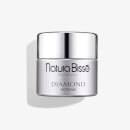diamond extreme cream reviews
Aging Skin: Loss of Firmness
Application Area: Decollete, Face, Neck
Ideal for these Concerns: Dryness and Dehydration
Ingredient: Shea Butter
Moisturizers: Face Moisturizer
Skin Care: Moisturizers
Skin Type: Dry Skin, Mature Skin, Normal Skin
Natura Bissé Diamond Extreme (1.7 oz.)
A moisturizing face cream that gives you suppler, firmer-looking skin.
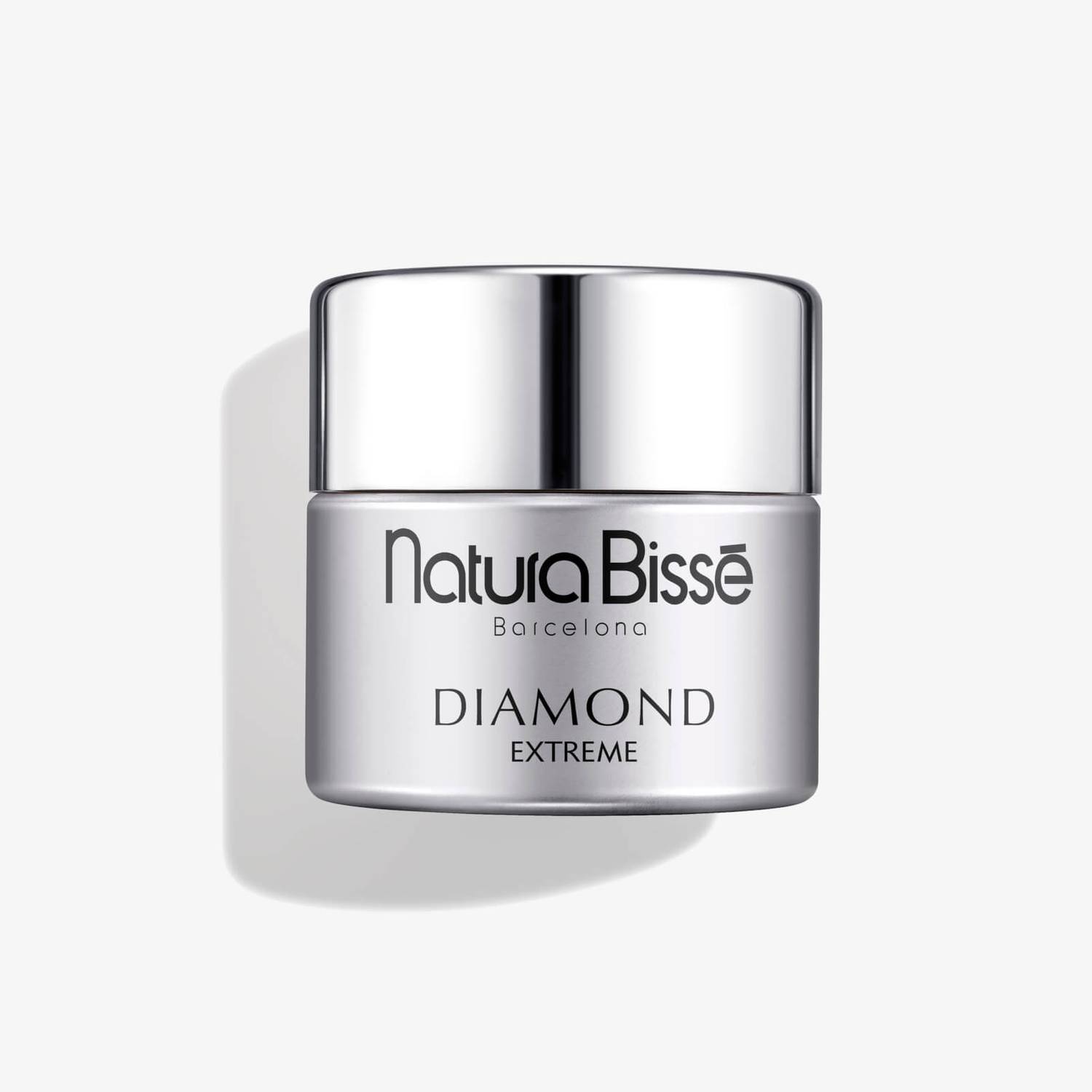
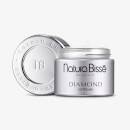
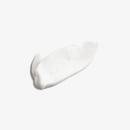
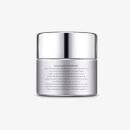
4 installments of $98.75 with Klarna Learn more
4 installments of $98.75 with afterpay Learn more
4 installments of $98.75 with sezzle Learn more
Reveal a healthier-looking complexion with help from Natura Bisse Diamond Extreme. Ideal for dry and mature skin types, this anti-aging moisturizer works well to combat fine lines and wrinkles thanks to a potent combination of lipids, ursolic acid and pea extract.
Key Ingredients:
- Artemia Salina Extract: creates the energy necessary to stimulate cellular metabolism.
- Ursolic Acid and Pea Extract: prevent loss of elasticity.
- Lipids extracted from amaranth, mango and shea, and an epidermal self-regulator: provide the perfect balance to the level of hydration in your skin.
- Edelweiss flower extract: a flower that can grow in the most extreme conditions, stimulates skin’s natural defenses.
After cleansing, toning and applying your treatment serum, apply the cream on face, neck and décolleté, morning and/or night. Massaging gently until completely absorbed.
Aging Skin: Loss of Firmness
Application Area: Decollete, Face, Neck
Ideal for these Concerns: Dryness and Dehydration
Ingredient: Shea Butter
Moisturizers: Face Moisturizer
Skin Care: Moisturizers
Skin Type: Dry Skin, Mature Skin, Normal Skin
Water (Aqua), Pentaerythrityl Tetracaprylate/Tetracaprate, Caprylic/Capric Triglyceride, Propylene Glycol, C12-20 Acid PEG-8 Ester, Cetearyl Ethylhexanoate, Hydrogenated Polydecene, Butyrospermum Parkii (Shea) Butter, Amaranthus Caudatus Seed Extract, Glycerin, Mangifera Indica (Mango) Seed Butter, Glyceryl Stearate, Pisum Sativum (Pea) Extract, Dimethicone, Tribehenin, Glyceryl Linoleate, Leontopodium Alpinum Extract, Artemia Extract, Ursolic Acid, Salicyloyl Phytosphingosine, Sodium Carboxymethyl Beta-Glucan, Sodium Chondroitin Sulfate, Allantoin, Cetyl Phosphate, Carbomer, C13-14 Isoparaffin, Ceratonia Siliqua Gum, Glyceryl Linolenate, Salvia Officinalis (Sage) Leaf Extract, Oleanolic Acid, Rosmarinus Officinalis (Rosemary) Leaf Extract, Polyacrylamide, Laureth-7, Triethanolamine, Disodium EDTA, BHT, Citric Acid, Sodium Hydroxide, Potassium Sorbate, Sodium Benzoate, Chlorphenesin, Phenoxyethanol, Methylparaben, Ethylparaben, Fragrance (Parfum), Linalool, Limonene, Coumarin, Geraniol, alpha-Isomethyl Ionone.
Water (Aqua), Pentaerythrityl Tetracaprylate/Tetracaprate, Caprylic/Capric Triglyceride, Propylene Glycol, C12-20 Acid Peg-8 Ester, Cetearyl Ethylhexanoate, Hydrogenated Polydecene, Butyrospermum Parkii (Shea) Butter, Amaranthus Caudatus Seed Extract, Glycerin, Mangifera Indica (Mango) Seed Butter, Glyceryl Stearate, Pisum Sativum (Pea) Extract, Dimethicone, Tribehenin, Glyceryl Linoleate, Leontopodium Alpinum Extract, Artemia Extract, Ursolic Acid, Salicyloyl Phytosphingosine, Sodium Carboxymethyl Beta-Glucan, Sodium Chondroitin Sulfate, Allantoin, Cetyl Phosphate, Carbomer, C13-14 Isoparaffin, Ceratonia Siliqua Gum, Glyceryl Linolenate, Salvia Officinalis (Sage) Leaf Extract, Oleanolic Acid, Rosmarinus Officinalis (Rosemary) Leaf Extract, Polyacrylamide, Laureth-7, Triethanolamine, Disodium Edta, Bht, Citric Acid, Sodium Hydroxide, Potassium Sorbate, Sodium Benzoate, Chlorphenesin, Phenoxyethanol, Methylparaben, Ethylparaben, Fragrance (Parfum), Linalool, Limonene, Coumarin, Geraniol, Alpha-Isomethyl Ionone. 150608. Formulations And Ingredients May Be Occasionally Modified. You Can Find Up To Date Information About This Product On Its Package And Its Leaflet.
Diamond Extreme
Orders placed by 3 p.m. Eastern time will be processed the same business day. Orders placed on weekends and holidays will be processed the next business day.
View our full policy here.
Limit of per order Limit of Natura Bissé products per order
To learn about your rights and how your information is used, see our Privacy Notice.
Imagine immersing your skin in a product that awakens your senses. Our signature age-defying Diamond Extreme cream targets extreme dryness and softens the signs of aging. Your skin gains optimal hydration in a single application. The Diamond Collection formula is designed to give your skin the vitality it needs to look younger for longer. Revel in the relaxing lavender aroma and this dazzling boost of energy for an invigorated complexion.
Key Benefits
Artemia salina helps invigorate your skin to revive dull and prematurely aged complexions. Epidermal Renewal Complex is a sophisticated self-regulator for skin that reinforces the moisture barrier and helps restore your complexion, improving tone and texture. Amaranth, mango and shea lipids are infused into this formula to provide intense hydration and nourishment. Ursolic acid and pea extract help improve flexibility and reduce the appearance of saggy skin. Edelweiss flower extract is a miracle plant that grows in extreme conditions. It helps make your skin more resilient.
View Full Ingredients List
Water (Aqua), Pentaerythrityl Tetracaprylate/Tetracaprate, Caprylic/Capric Triglyceride, Propylene Glycol, C12-20 Acid Peg-8 Ester, Cetearyl Ethylhexanoate, Hydrogenated Polydecene, Butyrospermum Parkii (Shea) Butter, Amaranthus Caudatus Seed Extract, Glycerin, Mangifera Indica (Mango) Seed Butter, Glyceryl Stearate, Pisum Sativum (Pea) Extract, Dimethicone, Tribehenin, Glyceryl Linoleate, Leontopodium Alpinum Extract, Artemia Extract, Ursolic Acid, Salicyloyl Phytosphingosine, Sodium Carboxymethyl Beta-Glucan, Sodium Chondroitin Sulfate, Allantoin, Cetyl Phosphate, Carbomer, C13-14 Isoparaffin, Ceratonia Siliqua Gum, Glyceryl Linolenate, Salvia Officinalis (Sage) Leaf Extract, Oleanolic Acid, Rosmarinus Officinalis (Rosemary) Leaf Extract, Polyacrylamide, Laureth-7, Triethanolamine, Disodium Edta, Bht, Citric Acid, Sodium Hydroxide, Potassium Sorbate, Sodium Benzoate, Chlorphenesin, Phenoxyethanol, Methylparaben, Ethylparaben, Fragrance (Parfum), Linalool, Limonene, Coumarin, Geraniol, Alpha-Isomethyl Ionone. 150608. Formulations And Ingredients May Be Occasionally Modified. You Can Find Up To Date Information About This Product On Its Package And Its Leaflet.
• Prepare skin with your cleanser, toner and treatment serum. Then apply a generous, luscious layer of Diamond Extreme. • Massage in gently until completely absorbed. Luxuriate in the creamy texture as it stimulates and awakens your skin. Pro Tips: • This is a sensational product for skin exposed to extreme environmental conditions, like cold or dry climates. • Highly recommended for dry, damaged skin.
• Prepare skin with your cleanser, toner and treatment serum. Then apply a generous, luscious layer of Diamond Extreme. • Massage in gently until completely absorbed. Luxuriate in the creamy texture as it stimulates and awakens your skin. Pro Tips: • This is a sensational product for skin exposed to extreme environmental conditions, like cold or dry climates. • Highly recommended for dry, damaged skin.
Scroll down to discover how we got on.
At a glance
Which skin solutions is Natura Bisse Diamond Extreme best for?
AGING
DULLNESS
SENSITIVE
Formulated WITHOUT
- Parabens
Key ingredients
- Artemia Salina; stimulates the energy necessary to boost cell metabolism
- Amaranth, mango and shea lipids; decrease water loss while hydrating skin
- Ursolic acid together with sweet pea extract; prevent loss of elasticity and firms skin
- Edelweiss flower extract; stimulates skin’s natural defenses
Ethics: Values that the brand embraces
ORGANIC
CRUELTY FREE
VEGAN
ECO FRIENDLY
C+C Vitamin Cream
Natura Bissé C+C Vitamin Cream is an antioxidant facial cream with a rich texture. It is formulated with antioxidant vitamins C and E to protect the skin from free radicals while also helping to minimize the appearance of discolorations.
The Natura Bissé return policy states, “At Natura Bissé, we take great pride in the quality of our products; attention to the highest standards and efficiency is our priority. We carefully inspect your order prior to shipment. Upon receipt, please inspect your purchase and notify us of any damage; we will arrange for a prompt replacement. If within 30 days of purchase, you are dissatisfied for any reason, you may return any unused product for a refund of the merchandise value.”
Natura Bissé is cruelty free. The brand does not test their ingredients or finished products on animals, and neither do their suppliers or any third-parties. In addition, Natura Bissé products are not sold in locations where animal testing is required by law.
Harper’s Bazaar Hong Kong recognizes the worldwide best-seller by Natura Bissé DIAMOND EXTREME at the Red List Beauty Awards 2015.
Our best anti-wrinkle cream
- Helps stimulate skin to revitalize your complexion.
- Nourishes and moisturizes to restore supple, soft skin.
- Provides a visible lifting effect.
- Helps minimize the appearance of wrinkles and expression lines.
WHY IS IT SO EFFECTIVE?
Artemia salina helps invigorate your skin to revive dull and prematurely aged complexions.
Epidermal Renewal Complex is a sophisticated self-regulator for skin that supports the moisture barrier and helps improve your complexion, improving tone and texture.
Amaranth, mango and shea lipids are infused into this formula to provide intense hydration and nourishment.
Ursolic acid and pea extract contribute to improve flexibility and reduce the appearance of saggy skin.
Edelweiss flower extract is a miracle plant that grows in extreme conditions. It helps make your skin more resilient.
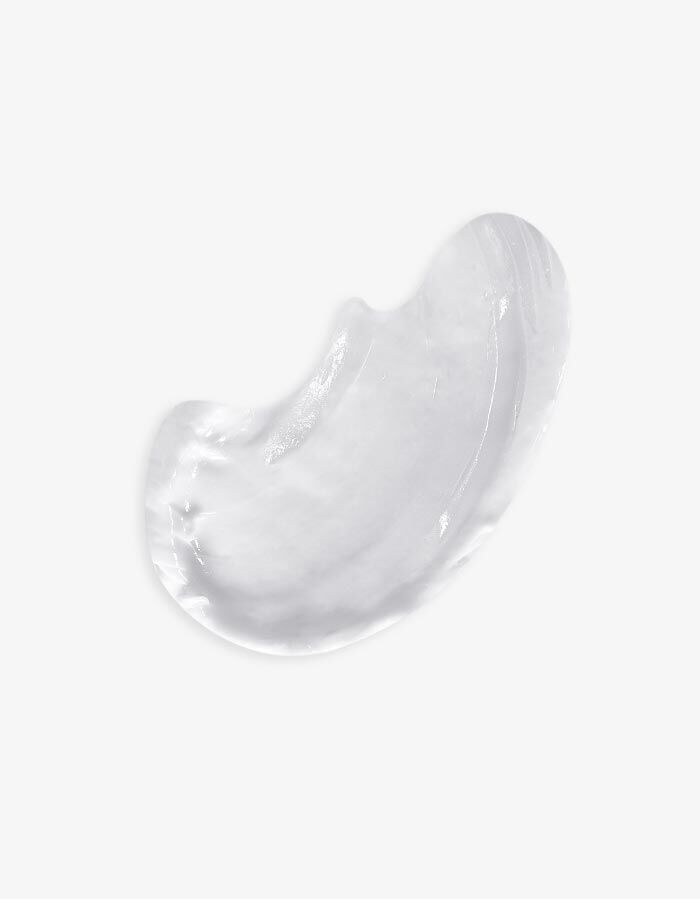
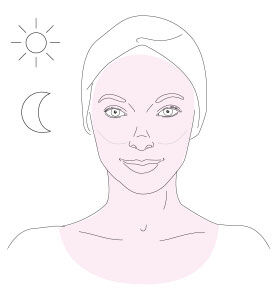
Prepare skin with your cleanser, toner, and treatment serum. Then apply a generous, luscious layer of Diamond Extreme.
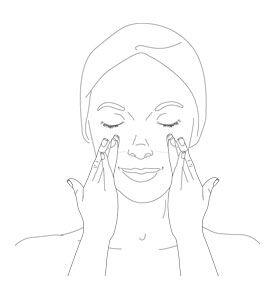
Massage in gently until completely absorbed. Luxuriate in the creamy texture as it stimulates and awakens your skin.
BEAUTY TIPS
This is a sensational product for skin exposed to extreme environmental conditions, like cold or dry climates.
As for skincare, Sodium Chondroitin Sulfate is probably too big to go right into the dermis (though much smaller than HA with 5000-50 000 Da molecular weight), but it has a comparable water binding ability to HA (which means a crazy water binding ability) and better affinity for the skin surface. This means that it forms a nice, water-rich film on the skin bringing an immediate and strong moisturising effect.
Diamond extreme cream reviews
Good old water, aka H2O. The most common skincare ingredient of all. You can usually find it right in the very first spot of the ingredient list, meaning it’s the biggest thing out of all the stuff that makes up the product.
It’s mainly a solvent for ingredients that do not like to dissolve in oils but rather in water.
Expand to read more
Once inside the skin, it hydrates, but not from the outside – putting pure water on the skin (hello long baths!) is drying.
One more thing: the water used in cosmetics is purified and deionized (it means that almost all of the mineral ions inside it is removed). Like this, the products can stay more stable over time.
We don’t have description for this ingredient yet.
A super common emollient that makes your skin feel nice and smooth. It comes from coconut oil and glycerin, it’s light-textured, clear, odorless and non-greasy. It’s a nice ingredient that just feels good on the skin, is super well tolerated by every skin type and easy to formulate with. No wonder it’s popular.
- It's a helper ingredient that improves the freeze-thaw stability of products
- It's also a solvent, humectant and to some extent a penetration enhancer
- It has a bad reputation among natural cosmetics advocates but cosmetic scientists and toxicology experts do not agree (read more in the geeky details section)
We don’t have description for this ingredient yet.
A synthetic emollient oil that leaves a soft non-greasy, non-sticky feel on the skin, absorbs fast and can be emulsified (mixed with water) very easily.
A hydrocarbon-based emollient that can come in different viscosities from silky-light through satiny-smooth to luxurious, rich. It forms a non-occlusive film on the surface of the skin and brings gloss without greasiness to the formula. It's a very pure and hypoallergenic emollient that's also ideal for baby care products.
Unless you live under a rock you must have heard about shea butter. It's probably the most hyped up natural butter in skincare today. It comes from the seeds of African Shea or Karite Trees and used as a magic moisturizer and emollient.
But it's not only a simple emollient, it regenerates and soothes the skin, protects it from external factors (such as UV rays or wind) and is also rich in antioxidants (among others vitamin A, E, F, quercetin and epigallocatechin gallate). If you are looking for rich emollient benefits + more, shea is hard to beat.
It's the seed extract of a plant called amaranth or love-lies-bleeding. It's a really ancient plant grown by Aztecs, Incas and Mayas as their main food and they called it “the golden grain”. They believed it had supernatural powers. Nowadays it's a popular health food because the seeds have great nutritional benefits and are high in protein.
As for skincare there are two types of the seed extract:
Expand to read more
1, The aqueous extract contains a high concentration of peptides and polysaccharides and helps to improve the combability and manageability of damaged hair.
2. The oily extract is more common and acts as other similar emollient plant oils. It's rich in non-saturated fatty acids (linoleic acid/omega-6 and oleic acid/omega-9) and squalene and is a great moisturizer and emollient for both skin and hair.
- A natural moisturizer that’s also in our skin
- A super common, safe, effective and cheap molecule used for more than 50 years
- Not only a simple moisturizer but knows much more: keeps the skin lipids between our skin cells in a healthy (liquid crystal) state, protects against irritation, helps to restore barrier
- Effective from as low as 3% with even more benefits at higher concentrations up to 20-40% (around 10% is a good usability-effectiveness sweet spot)
- High-glycerin moisturizers are awesome for treating severely dry skin
The soft solid, off-white to ivory butter or oil coming from the kernel (the seed inside of the seed) of the Mango. Similar to many other plant oils, it's a great moisturizing and nourishing emollient oil. It has medium spreadability and gives skin a creamy-dry feel.
It's loaded with a bunch of good-for-the-skin stuff: it contains almost all of the essential amino acids, has several antioxidant phenolic compounds (including famous antioxidant ferulic acid) and is a rich source of nourishing fatty acids (like stearic and oleic acid).
Expand to read more
All in all, a skin goodie especially for dry skin types.
A super common, waxy, white, solid stuff that helps water and oil to mix together, gives body to creams and leaves the skin feeling soft and smooth.
Chemically speaking, it is the attachment of a glycerin molecule to the fatty acid called stearic acid. It can be produced from most vegetable oils (in oils three fatty acid molecules are attached to glycerin instead of just one like here) in a pretty simple, "green" process that is similar to soap making. It's readily biodegradable.
Expand to read more
It also occurs naturally in our body and is used as a food additive. As cosmetic chemist Colins writes it, "its safety really is beyond any doubt".
We don’t have description for this ingredient yet.
Probably the most common silicone of all. It is a polymer (created from repeating subunits) molecule and has different molecular weight and thus different viscosity versions from water-light to thick liquid.
As for skincare, it makes the skin silky smooth, creates a subtle gloss and forms a protective barrier (aka occlusive). Also, works well to fill in fine lines and wrinkles and give skin a plump look (of course that is only temporary, but still, it's nice). There are also scar treatment gels out there using dimethicone as their base ingredient. It helps to soften scars and increase their elasticity.
Expand to read more
As for hair care, it is a non-volatile silicone meaning that it stays on the hair rather than evaporates from it and smoothes the hair like no other thing. Depending on your hair type, it can be a bit difficult to wash out and might cause some build-up (btw, this is not true to all silicones, only the non-volatile types).
It's the triglyceride of behenic acid that works as a thickening or gelling agent, as a compacting agent for pressed powders, and improves heat stability of emulsions.
We don’t have description for this ingredient yet.
We don’t have description for this ingredient yet.
We don’t have description for this ingredient yet.
We don’t have description for this ingredient yet.
We don’t have description for this ingredient yet.
We don’t have description for this ingredient yet.
Though its name does not reveal it, this molecule is a relative of famous IT-moisturizer, Hyaluronic Acid. Just like HA, it is a glycosaminoglycan (aka GAG), meaning that it is a big sugar molecule from repeated subunits (what's more, one of the subunits is the same, glucuronic acid). Along with HA and other GAGs, it likes to hang out in the dermis (middle) layer of the skin where it is part of the gooey, bouncy stuff outside of the cells called extracellular matrix (ECM).
As for skincare, Sodium Chondroitin Sulfate is probably too big to go right into the dermis (though much smaller than HA with 5000-50 000 Da molecular weight), but it has a comparable water binding ability to HA (which means a crazy water binding ability) and better affinity for the skin surface. This means that it forms a nice, water-rich film on the skin bringing an immediate and strong moisturising effect.
Super common soothing ingredient. It can be found naturally in the roots & leaves of the comfrey plant, but more often than not what's in the cosmetic products is produced synthetically.
It's not only soothing but it' also skin-softening and protecting and can promote wound healing.
A white to beige powder that helps oil and water to mix nicely together (aka oil in water emulsifier). It is a good emulsifier choice for stable water-resistant sunscreen formulas.
A big molecule created from repeated subunits (a polymer of acrylic acid) that magically converts a liquid into a nice gel formula. It usually has to be neutralized with a base (such as sodium hydroxide) for the thickening to occur and it creates viscous, clear gels that also feel nice and non-tacky on the skin. No wonder, it is a very popular and common ingredient. Typically used at 1% or less in most formulations.
It's a petroleum derived emollient and thickener. It often comes to the formula as part of an emulsifier, thickener trio (with Polyacrylamide and Laureth-7). This trio is an easy-to-use liquid that helps to create nice, non-tacky gel formulas.
We don’t have description for this ingredient yet.
We don’t have description for this ingredient yet.
We don’t have description for this ingredient yet.
We don’t have description for this ingredient yet.
The extract coming from the lovely herb, rosemary. It contains lots of chemicals, including flavonoids, phenolic acids, and diterpenes. Its main active is rosmarinic acid, a potent antioxidant, and anti-inflammatory. It has also anti-bacterial, astringent and toning properties.
The leaves contain a small amount of essential oil (1-2%) with fragrant components, so if you are allergic to fragrance, it might be better to avoid it.
It's a film-forming and thickening polymer (a large molecule composed of many repeated subunits) that comes to the formula usually as part of an emulsifier, thickener trio (with C13-14 Isoparaffin and Laureth-7, trade named Sepigel 305). This trio is an easy-to-use liquid that helps to create nice, non-tacky gel formulas.
A not-very-interesting helper ingredient that is used as an emulsifier and/or surfactant. Comes from a coconut oil derived fatty alcohol, lauryl alcohol.
It’s a little helper ingredient that helps to set the pH of a cosmetic formulation to be just right. It’s very alkaline (you know the opposite of being very acidic): a 1% solution has a pH of around 10.
It does not have the very best safety reputation but in general, you do not have to worry about it.
Expand to read more
What is true is that if a product contains so-called N-nitrogenating agents (e.g.: preservatives like 2-Bromo-2-Nitropropane-1,3-Diol, 5-Bromo-5-Nitro- 1,3-Dioxane or sodium nitrate – so look out for things with nitro, nitra in the name) that together with TEA can form some not nice carcinogenic stuff (that is called nitrosamines). But with proper formulation that does not happen, TEA in itself is not a bad guy.
But let’s assume a bad combination of ingredients were used and the nitrosamines formed. 🙁 Even in that case you are probably fine because as far as we know it cannot penetrate the skin.
But to be on the safe side, if you see Triethanolamine in an INCI and also something with nitra, nitro in the name of it just skip the product, that cannot hurt.
Super common little helper ingredient that helps products to remain nice and stable for a longer time. It does so by neutralizing the metal ions in the formula (that usually get into there from water) that would otherwise cause some not so nice changes.
It is typically used in tiny amounts, around 0.1% or less.
It's the acronym for Butylated Hydroxy Toluene. It's a common synthetic antioxidant that's used as a preservative.
There is some controversy around BHT. It's not a new ingredient, it has been used both as a food and cosmetics additive since the 1970s. Plenty of studies tried to examine if it's a carcinogen or not. This Truth in Aging article details the situation and also writes that all these studies examine BHT when taken orally.
Expand to read more
As for cosmetics, the CIR (Cosmetic Ingredient Review) concluded that the amount of BHT used in cosmetic products is low (usually around 0.01-0.1%), it does not penetrate skin far enough to be absorbed into the bloodstream and it is safe to use in cosmetics.
Citric acid comes from citrus fruits and is an AHA. If these magic three letters don’t tell you anything, click here and read our detailed description on glycolic acid, the most famous AHA.
So citric acid is an exfoliant, that can – just like other AHAs – gently lift off the dead skin cells of your skin and make it more smooth and fresh.
Expand to read more
There is also some research showing that citric acid with regular use (think three months and 20% concentration) can help sun-damaged skin, increase skin thickness and some nice hydrating things called glycosaminoglycans in the skin.
But according to a comparative study done in 1995, citric acid has less skin improving magic properties than glycolic or lactic acid. Probably that’s why citric acid is usually not used as an exfoliant but more as a helper ingredient in small amounts to adjust the pH of a formulation.
The unfancy name for it is lye. It’s a solid white stuff that’s very alkaline and used in small amounts to adjust the pH of the product and make it just right.
For example, in case of AHA or BHA exfoliants, the right pH is super-duper important, and pH adjusters like sodium hydroxide are needed.
Expand to read more
BTW, lye is not something new. It was already used by ancient Egyptians to help oil and fat magically turn into something else. Can you guess what? Yes, it’s soap. It still often shows up in the ingredient list of soaps and other cleansers.
Sodium hydroxide in itself is a potent skin irritant, but once it's reacted (as it is usually in skin care products, like exfoliants) it is totally harmless.
It's one of those things that help your cosmetics not to go wrong too soon, aka a preservative. It’s not a strong one and doesn’t really work against bacteria, but more against mold and yeast. To do that it has to break down to its active form, sorbic acid. For that to happen, there has to be water in the product and the right pH value (pH 3-4).
But even if everything is right, it’s not enough on its own. If you see potassium sorbate you should see some other preservative next to it too.
Expand to read more
BTW, it’s also a food preservative and even has an E number, E202.
A helper ingredient that helps to make the products stay nice longer, aka preservative. It works mainly against fungi.
It’s pH dependent and works best at acidic pH levels (3-5). It’s not strong enough to be used in itself so it’s always combined with something else, often with potassium sorbate.
A little helper ingredient that works as a preservative. It works against bacteria and some species of fungi and yeast. It's often combined with IT-preservative, phenoxyethanol.
It’s pretty much the current IT-preservative. It’s safe and gentle, but even more importantly, it’s not a feared-by-everyone-mostly-without-scientific-reason paraben.
It’s not something new: it was introduced around 1950 and today it can be used up to 1% worldwide. It can be found in nature – in green tea – but the version used in cosmetics is synthetic.
Expand to read more
Other than having a good safety profile and being quite gentle to the skin it has some other advantages too. It can be used in many types of formulations as it has great thermal stability (can be heated up to 85°C) and works on a wide range of pH levels (ph 3-10).
It’s often used together with ethylhexylglycerin as it nicely improves the preservative activity of phenoxyethanol.
The most common type of feared-by-everyone-mostly-without-scientific-reason parabens. It's a cheap, effective and well-tolerated ingredient to make sure the cosmetic formula does not go wrong too soon.
Apart from the general controversy around parabens (we wrote about it more here), there is a 2006 in-vitro (made in the lab not on real people) research about methylparaben (MP) showing that when exposed to sunlight, MP treated skin cells suffered more harm than non-MP treated skin cells. The study was not done with real people on real skin but still – using a good sunscreen next to MP containing products is a good idea. (Well, in fact using a sunscreen is always a good idea. :))
A very common type of feared-by-everyone-mostly-without-scientific-reason paraben. It's a cheap, effective and well-tolerated ingredient to make sure the cosmetic formula does not go wrong too soon. Read more about parabens here >>
Exactly what it sounds: nice smelling stuff put into cosmetic products so that the end product also smells nice. Fragrance in the US and parfum in the EU is a generic term on the ingredient list that is made up of 30 to 50 chemicals on average (but it can have as much as 200 components!).
If you are someone who likes to know what you put on your face then fragrance is not your best friend – there's no way to know what’s really in it.
Expand to read more
Also, if your skin is sensitive, fragrance is again not your best friend. It’s the number one cause of contact allergy to cosmetics. It’s definitely a smart thing to avoid with sensitive skin (and fragrance of any type – natural is just as allergic as synthetic, if not worse!).
Linalool is a super common fragrance ingredient. It’s kind of everywhere – both in plants and in cosmetic products. It’s part of 200 natural oils including lavender, ylang-ylang, bergamot, jasmine, geranium and it can be found in 90-95% of prestige perfumes on the market.
The problem with linalool is, that just like limonene it oxidises on air exposure and becomes allergenic. That’s why a product containing linalool that has been opened for several months is more likely to be allergenic than a fresh one.
Expand to read more
A study made in the UK with 483 people tested the allergic reaction to 3% oxidised linalool and 2.3% had positive test results.
A super common and cheap fragrance ingredient. It's in many plants, e.g. rosemary, eucalyptus, lavender, lemongrass, peppermint and it's the main component (about 50-90%) of the peel oil of citrus fruits.
It does smell nice but the problem is that it oxidizes on air exposure and the resulting stuff is not good for the skin. Oxidized limonene can cause allergic contact dermatitis and counts as a frequent skin sensitizer.
Expand to read more
Limonene's nr1 function is definitely being a fragrance component, but there are several studies showing that it's also a penetration enhancer, mainly for oil-loving components.
All in all, limonene has some pros and cons, but – especially if your skin is sensitive – the cons probably outweigh the pros.
A common fragrance ingredient that has a sweet, vanilla, nutty scent. When diluted it smells like freshly-mown hay.
It’s one of the “EU 26 fragrances” that has to be labelled separately (and cannot be simply included in the term “fragrance/perfume” on the label) because of allergen potential. Best to avoid if your skin is sensitive.
Geraniol is a common fragrance ingredient. It smells like rose and can be found in rose oil or in small quantities in geranium, lemon and many other essential oils.
Just like other similar fragrance ingredients (like linalool and limonene) geraniol also oxidises on air exposure and becomes allergenic. Best to avoid if you have sensitive skin.
It’s a common fragrance ingredient that is one of the “EU 26 fragrances” that has to be labelled separately (and cannot be simply included in the term “fragrance/perfume” on the label) because of allergen potential. Best to avoid if your skin is sensitive.
